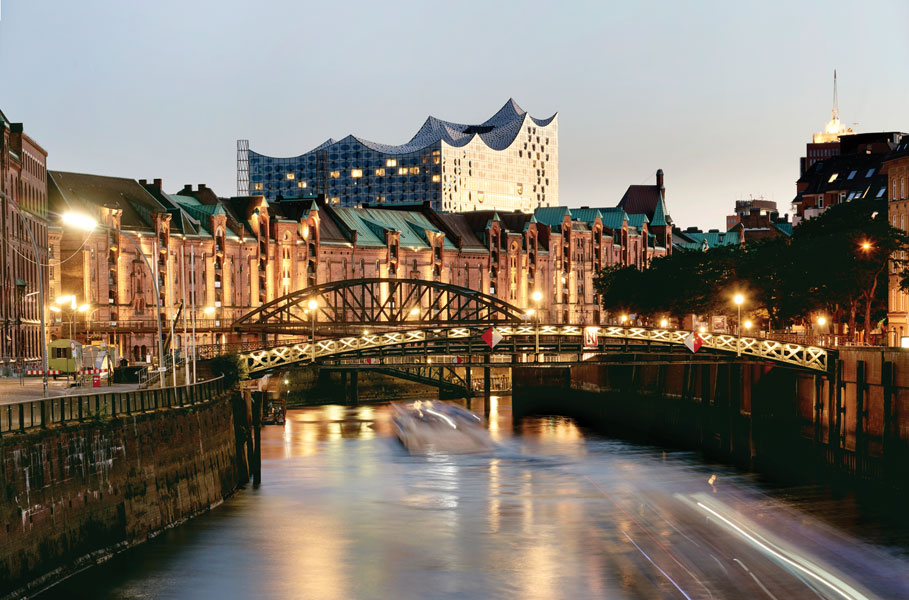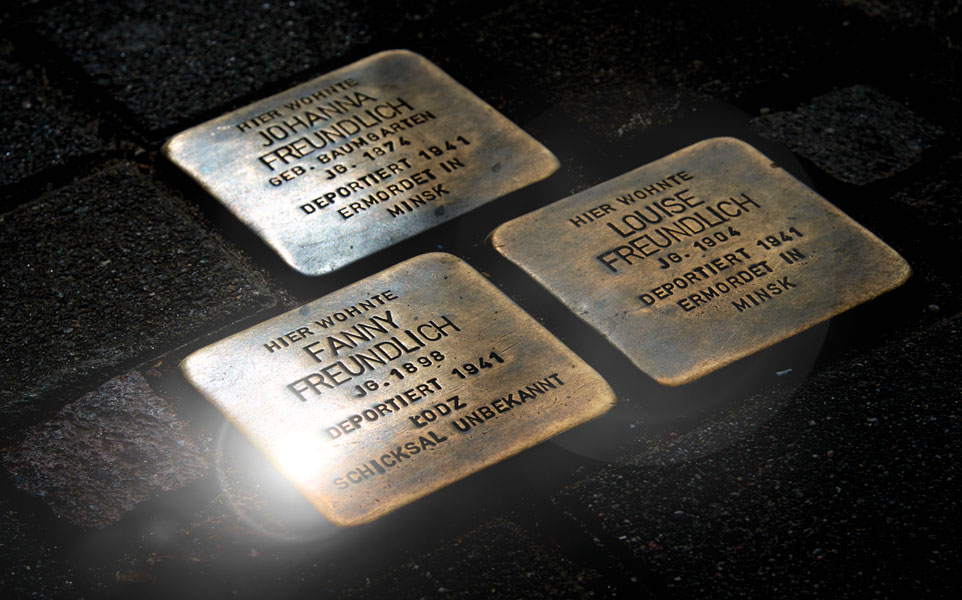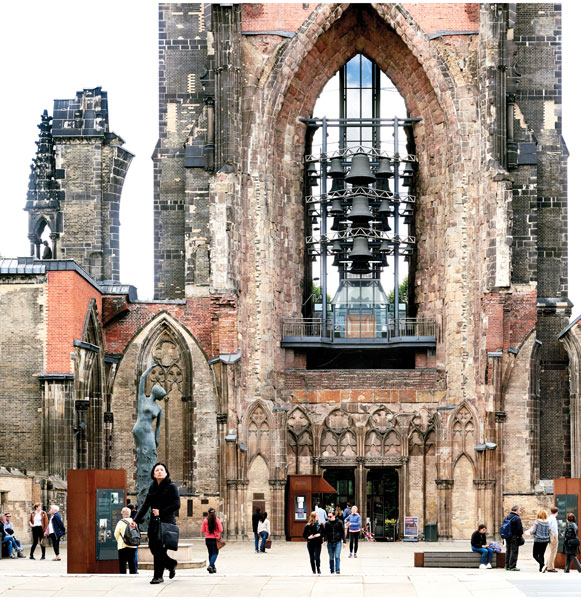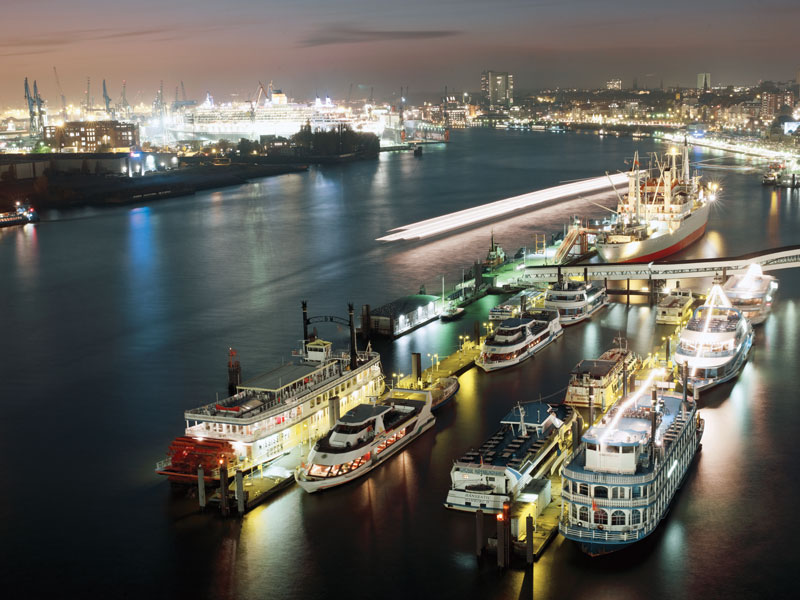Ich bin ein Hamburger Drop anchor in Germany’s gateway to the world, where it’s easy to feel like a local.
Walking through Hamburg’s main train station on our first day in the city, my husband, Anton, spots a man sitting in a tiny bar enjoying a beer and a smoke. His peculiar garb — black corduroy jacket, vest and bell-bottom pants, along with a battered top hat — gives him away. He’s one of Germany’s Wandergesellen, a journeyman carpenter who, in a tradition that dates to the Middle Ages, travels the world for two or three years carrying only a change of clothes, a few euros, and his skills.

Like us, he’s just another visitor to Hamburg. A real person in a real city — a city, as we come to realise, that’s the coolest place we never knew we wanted to visit.
In an age when every destination seems to be making itself over to please tourists, Hamburg steadfastly chooses to please itself. Undeniably authentic, the city greets visitors with a friendly ahoy! and then goes about its business — and business is the business of Hamburg — leaving you to enjoy its many charms.
Situated on the Elbe River, the city’s pathway to the North Sea, Hamburg — which will host the 2019 Rotary International Convention — is the third largest port in Europe, a thriving hub of global trade. Across the river from the colossal harbour is the inviting downtown, with bridges and canals that locals claim outnumber those of Amsterdam and Venice and a picturesque lake that serves as the city’s playground. As befits a Marktplatz for the world’s goods, shopping abounds, as do options for entertainment. On Saturday nights, people of all ages converge on the Reeperbahn, the once notorious red-light district where, in the early 1960s, the Beatles became the Beatles. And jutting out into the river like a ship at full sail is the new Elbphilharmonie (the Elbphi for short), a brick and glass concert hall whose dramatic exterior and finely tuned interior proclaim Hamburg’s intent to establish a serious performance heritage rivalling anything the continent might offer.
All of this in a city that’s compact and easy to navigate on foot, by bike, on public transit and — maybe even especially — by boat.
Getting to know Hamburg’s waterways is key to understanding what makes the city tick. Holger Knaack, co-chair of the convention’s Host Organisation Committee and a past governor of District 1940, puts it succinctly: “Hamburg is water, everywhere.” Even the Ham in Hamburg comes from an Old Saxon word meaning “marshland”.
The aqueous heart of this maritime city is the Alster, a lake created 800 years ago by damming a small river. It’s divided into two parts: the Binnenalster, or Inner Alster, and the larger Außenalster, or Outer Alster. The Elbe, meanwhile, is the city’s pulsing lifeline: Though Hamburg lies 65 miles from the North Sea, here at the city’s centre the river and its canals still rise and fall with the tides.
Along the Jungfernstieg, a stepped terrace that runs along the Inner Alster, Hamburg’s wealthy merchants once promenaded with their unmarried daughters. It’s still a chic showcase of the city’s inhabitants. Anton and I grab a table at one of the open-air cafés and watch the red-and-white tour boats that dock here before heading out to explore the Outer Alster, the city’s canals, and the Elbe.
We opt to take the footpath around the Outer Alster. People are fishing, sunbathing, reading, walking dogs, biking and boating. With no private motorboats allowed, says Andreas von Möller, a Hamburg native whose roots here go back for generations, “sailing on the lake is a dream.” PDG Von Möller, District 1890, serves as Knaack’s fellow HOC chair.A little more than four miles around, the lakeshore is dotted with cafés and restaurants. At the Alsterperle, a self-service café housed in a former public toilet — far more appealing than it sounds — we pull out our map to plot our next move. The lady sharing our table asks where we’re from. We’ve hardly begun to reply when another café-goer appears at our side and asks, “Did you say you’re from Chicago? I love Chicago!” Our new friends have tips for us in the nearby neighbourhood of St Georg: The bar on top of Le Méridien hotel, we learn, has the best view of the Alster, while the terrace at the Hotel George is a fantastic place to enjoy the sunset. With friends like that, who needs a map?

Though defined by its waterways, Hamburg was forged by fire. Two major conflagrations — the first in 1842, the second ignited by Allied air raids during World War II — devastated the city, leaving few traces of its medieval origins. The first fire broke out on the Deichstrasse, a short street built on a 13th-century dike; despite that, the street today contains the only cluster of buildings in the old Hamburg style of architecture. One of them, Deichstrasse 25, houses a restaurant called Zum Brandanfang, which means “the place where the fire started”; on the other side of the Old Town, there’s a street called Brandsende, or Fire’s End.
The destruction wrought by war was on a different scale. During 10 days of bombing in July 1943, at least 40,000 people died as entire neighbourhoods were obliterated. To better understand what occurred, we visit the St Nikolai memorial. The tallest of Hamburg’s five major churches, St Nikolai remains in its bombed-out state as a memorial to all victims of war. Its crypt houses a small but powerful museum whose account of the air raids provides perspective on the experiences not only of the people of Hamburg, but of the bomber crews themselves.
As we walk through the city, another reminder of World War II is at our feet: Stolpersteine, or ‘stumbling stones.’ These brass plates are fitted in among the cobblestones in front of buildings where Jewish people, Roma, gays, dissidents and other victims of the Nazis last lived. Each plate is engraved with the name of an individual and, in most cases, the years when he or she was born, was deported to a concentration camp, and died. Conceived in 1996 by Berlin artist Gunter Demnig, the stones are now found in cities throughout Europe.

From the Deichstrasse, we walk down a narrow alleyway to the canal behind the historic row of merchant houses. Here, goods originating in ports around the world were delivered by boat and stored on the lower floor of a house; the second floor traditionally featured offices and a large reception space for clients, while the family occupied the upper floors. Canals also define the nearby district called the Speicherstadt, where the narrow waterways between tall brick warehouses, or Speicher, conjure a Northern Germany-meets-Venice vibe.
The 19th-century uniformity of the Speicherstadt yields to the modern sensibility of the adjacent HafenCity. When finished in 2030, this riverside development project — which features shops, restaurants, apartments and offices housed in a mix of older buildings and new ones designed by Renzo Piano, Rem Koolhaas, Philippe Starck, among others — will almost double the size of the city centre.
The architectural highlight of HafenCity is already in place: the two-year-old, 26-story Elbphilharmonie concert hall. (None of Hamburg’s buildings rise taller than the city’s principal church steeples.) The building’s base, a repurposed brick warehouse, gives way in dramatic fashion to a glass superstructure that evokes soaring waves. Its midlevel terrace commands contrasting perspectives that capture the city’s ethos: in one direction, a view of the Elbe and the giant cranes lining the immense port, which occupies 17,500 acres of land and water on the opposite side of the river; and in the other direction, the city proper, with its Rathaus (city hall) and the spires of Saints Nikolai, Michaelis, Petri, Jacobi and Katharinen.
“Hamburg is a very special city, a very open city, and one of the most modern cities in Germany, both architecturally and in mindset,” says Knaack. This cosmopolitan outlook is a consequence of 800 years of history as a free port — and as not merely a city, but an independent city-state. The city’s official name, Freie und Hansestadt Hamburg — the Free and Hanseatic City of Hamburg — recalls Hamburg’s membership in the Hanseatic League, a confederation of northern European cities that dominated trade on the North and Baltic seas from about 1200 to 1500.
“We live from the port,” von Möller adds. “That’s where Hamburg breathes. It’s a gateway to the world.”
For a close encounter with the towering cargo ships, Knaack and von Möller recommend one of the harbour cruises that depart from the Landungsbrücke, a floating dock in the St Pauli neighbourhood. The boat takes us downriver as far as the suburb of Övelgönne, where hillside villas overlook a popular beach. We pass the U-434, a Russian submarine that has been converted into a museum, and the Altona Fischmarkt. Heading back upriver, we encounter vessels in drydock and watch as massive ships are loaded with as many as 20,000 containers. Finally, we glide past the Rickmer Rickmers, another museum ship, before turning around under the Elbphi and steaming back to the dock.
In St Pauli, the Reeperbahn — a long thoroughfare where rope-makers once stretched out their hemp — has been home to sailors’ watering holes for well over a century; in 1848 the district had 19 legal brothels. Since the Beatles lived here in the early ’60s, playing nightly gigs in the Kaiserkeller and the Star Club, it has become much more respectable.
“My wife and I are regulars on Saturday night on the Reeperbahn. We go to the theatres,” says Andreas Wende, the HOC’s marketing chair and a member of RC Ahrensburg. “It’s typical for young people ages about 20 to 40 to go to the Reeperbahn on Friday and Saturday evenings. They go out at 10 or 11 on Saturday night, party until 5 or 6 am, then go to the Fischmarkt on Sunday morning” — a sort of hard day’s night in reverse.
Hamburg’s efficient public transit system is another great way to see the city’s sights; passes will be included in the registration for the Hamburg convention. “You’ll have access to trams, ferries, everything,” says the Convention Chair John Blount.
A city that prides itself as a global gateway — and that is home to the first Rotary club in Germany — Hamburg is an ideal place to bring together Rotarians from around the world. The convention’s theme, Capture the Moment, “is about the power and potential and force Rotary has in your life and in the world,” says Blount. “We want to capture where we are and what we can do — the possibilities of Rotary as an organisation and in our clubs. We want you to be there to experience that.”
The Messe, the city’s convention centre, is centrally located — about a 10-minute walk from the major convention hotels, and easily accessible by public transit. Several distinct neighbourhoods filled with restaurants, cafés, shops, and parks are nearby: the bohemian Karolinenviertel; the sumptuous Rotherbaum; the historically Jewish Grindel, now the leafy university quarter; and the hip Schanzenviertel, which should be an irresistible draw to young Rotarians and Rotaractors.
Back in the Altstadt (Old Town), the Mönckebergstrasse, which runs roughly from the main train station to the Rathaus, is the city’s major shopping thoroughfare. Haute boutiques line the arcades of the Neustadt, and more than 100 shops and restaurants fill the five floors of the Europa Passage. And that’s just a taste of Hamburg’s offerings, which we’ve only begun to explore when our five-day stay concludes.
As Anton and I head out of town, already plotting to return, we finally figure out Hamburg’s allure. Hamburgers, as its citizens are known, have created a city designed for their own enjoyment — though they happily share the pleasures of their museums and parks, their theatres, restaurants and cafés, with visitors.
“It is an attractive city, but the people are modest and humble,” says von Möller. “We don’t show off. We say, ‘Gosh, you might like it. You should have a look.”
Come June 2019, I recommend you do just that.
(The title translates to ‘I am a Hamburg citizen in spirit’)
Register for the 2019 Rotary Convention (Jun 1–5) at www.riconvention.org
Pictures by Samuel Zuder
© The Rotarian
Be our guest
Moin, moin is the traditional Hamburg way of saying hello, and the city’s Rotarians are eager to greet you. The Hamburg HOC, chaired by Andreas von Möller and Holger Knaack, has planned cultural events for every night of the convention to show you the many sides of Hamburg and introduce you to local Rotarians. To learn more and buy tickets, visit ric2019.rotary.de/en
Saturday: Hamburg Rotarians will host a welcome party for 2,000 convention goers in the historic Hamburg Chamber of Commerce building in the heart of the city.
Sunday: The renowned National Youth Ballet, whose general director, John Neumeier, is celebrating both his 80th birthday and his 46th season with the State Opera of Hamburg ballet company next year, will perform for convention goers. (Balletomanes, take note: The 45th Hamburg Ballet Days begins shortly after the convention ends, on June 16.)
Monday: The HOC has reserved Hamburg’s show-stopping new landmark, the Elbphilharmonie, for two performances of classical music. Celebrated for its architecture as well as its acoustics, the building also offers breathtaking views of the city and its harbour.
Tuesday: Local clubs will organise host hospitality events. Experience German Gastfreundschaft!
Public events: The HOC is also planning several free public events, including a 14-day bicycle tour that will take some 200 riders from Austria through Germany to Hamburg. Each day, the group will stop for an event to raise awareness of polio. Rotarians from around Hamburg can join the ride for the final 20 kilometers, arriving at the Rathaus (city hall) on the morning of Saturday, June 1. Riders need to register in advance, but everyone is welcome to come to the Rathaus square to celebrate the end of the ride. One of the city’s major thoroughfares, meanwhile, will feature booths presenting Rotary’s six areas of focus to the public.
When in Hamburg…
Locals share their favourite things to do in the city
“Sailing on the Outer Alster; driving along the Elbchaussee to the Michelin-starred restaurants Landhaus Scherrer and Le Canard Nouveau; and exploring the riverside village of Blankenese.”
– Andreas von Möller, HOC co-chair
“Café Paris in the city centre. They have a great chocolate tart that my dad loves. My favourite is the breakfast for two with champagne.
The North Sea and the Baltic are both an hour or two away. Lübeck, on the Baltic, is a beautiful old town.”
–Yvette Grave, Rotary Club of Hamburg-Winterhude
“Take a walk around the Outer Alster; it’s really cool, and you see a lot of Hamburg. Every 500 metres there is a restaurant or café. The best is Portonovo, an Italian restaurant with great views of the lake. Hamburg is a harbour city, and the fish is good everywhere. A famous restaurant, Fischereihafen, is one of the best in Germany.”
– Andreas Wende, HOC Marketing Chair
“The Fischmarkt is an open-air Sunday morning market with fish, fruit, flowers, souvenirs and food. The proper way is to party Saturday night away in St Pauli and then go directly to the Fischmarkt for Fischfrikadellen (fishburger on a bread roll).
If you are looking for good German bread, go to Bäcker Gaues in the Europa Passage. Another bakery, Dat Backhus, is a chain but also quite good. Ask for Franzbrötchen, a sweet Hamburg treat made with cinnamon and sugar.”
– Gundula Miethke, Rotary Regional Communication Specialist
Hamburg on the page
Hamburg: A Cultural History
by Matthew Jefferies
Every great city deserves a book like this. Concise and full of interesting tidbits, it reaches back to the city’s earliest history and covers the waterfront of its neighbourhoods and landmarks, its values and customs, and its people.
Buddenbrooks
by Thomas Mann
This 1901 family saga is set in nearby Lübeck, Nobel laureate Mann’s native city and, like Hamburg, a Hanseatic port peopled with merchants and traders.
Inferno: The Fiery Destruction of Hamburg, 1943
by Keith Lowe
This deeply researched history describes the Allied firebombing of Hamburg during World War II and its aftermath from the point of view of both the city’s residents and the men who carried out the bombing.
The End: Hamburg 1943
by Hans Erich Nossack
This eyewitness report, written three months after the bombing, reflects with heartbreaking clarity on the event itself and how it reverberated through the survivors’ souls.
The World That Summer
by Robert Muller
Hamburg in 1936 is the setting for this semi-autobiographical story of a boy whose life is shaped by that time and place.
Baby’s in Black: Astrid Kirchherr, Stuart Sutcliffe, and the Beatles
by Arne Bellstorf
Fans of the Fab Four can go back in time to the early 1960s, when a group of Hamburg art students befriended the still-unknown lads from Liverpool.
Breakout sessions
The Hamburg convention will draw attendees from around the world. Help Rotary build a breakout programme that celebrates our diversity. We are seeking sessions in English, French, German, Italian, Portuguese and Spanish. Visit on.rotary.org/IC19sessions to learn more and submit your proposal. All proposals must be submitted online by September 30.

